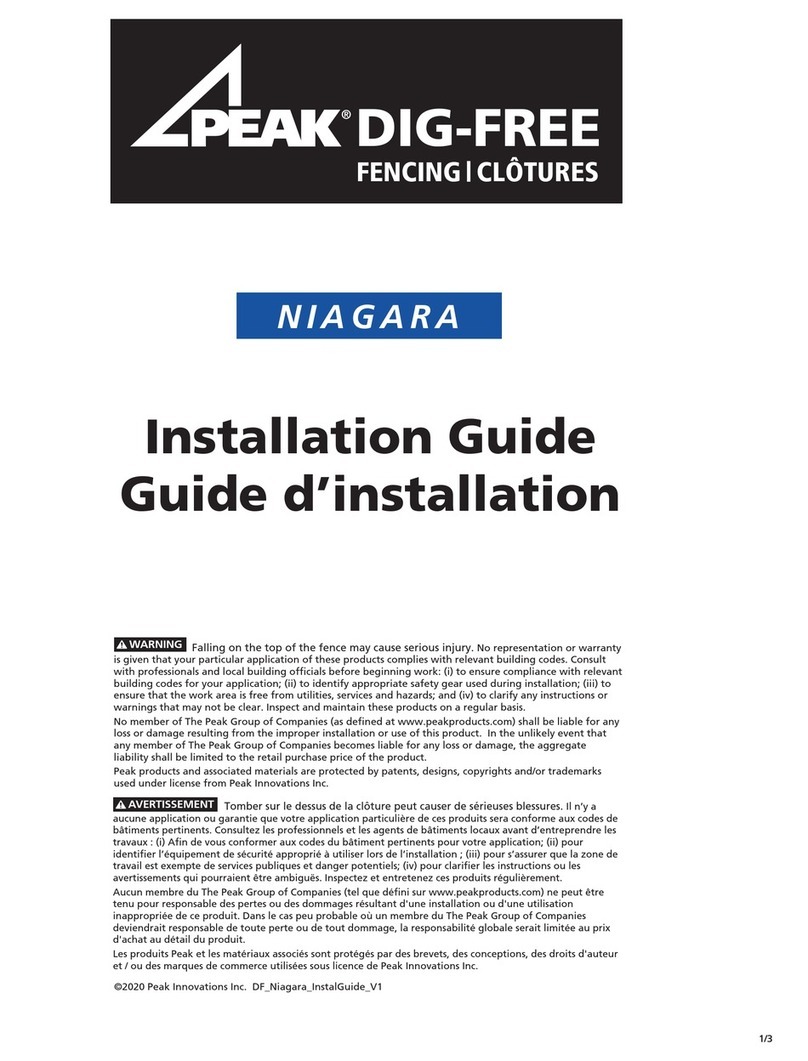
Getting Started
We take great pride in the quality of our workmanship with all
our picket fences. Think Fencing’s picket fence installation is
made simple with our special interlocking tabs that join the rail
to the posts, therefore no nails or screws required! Consequently
maintenance is minimal for the life of your picket fence.
Congratulations on your new Think Fencing
Picket Fencing System.
Picket Fencing Features:
DIY
Installation
Lifetime
Warranty
Eco
Friendly
Australian
Made
Graffiti
Resistant
Never Paint
Again
4Picket Fencing | Installation Guide
Installation Tips
Install the fence on a still day as wind can make the string
line move.
Mow any grass and level the fence line prior to allow for
easier installation.
For planning purposes each hole will require 0.045m/3 of
concrete.
When concreting the post, Think Fencing recommend to
first put the post into the ground, pour the concrete in, then
lift and push it back into the concrete. This method allows
the concrete to travel up the post core.
If you have sandy/loose soil, Think Fencing recommends
that you increase your hole size and amount of concrete to
create a bigger foundation.
Creating a gauge with a piece of timber or plastic allows you
to easily check the measurement between posts.
Keep a rasp handy to open the slots up if the rail or pickets
are difficult to slide in or if the fence is on a slope.
The fence can already accommodate a 1.0 degree rake.
Anything larger than this will require increasing the length
of the slot by rasping it out on site or have Think Fencing
provide custom routed posts.
If the fence is to be installed around a corner with an angle
between 0-45 degree the rail slot width can be increased
using a rasp to allow for a greater angle.
When crimping, make sure that the crimp is facing
outwards. The crimp is designed to allow you to push the
rail into the post but not pull out.
Shortening a Panel
All PVC components can be cut using a saw to enable you
to shorten a panel. When cutting rails, ensure you leave at
least 30mm on each side to slide into the post.
If using a circular saw, it is recommended to use an
Aluminium cutting blade for the best cut.

































